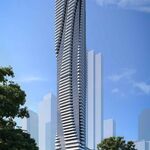U
unimaginative2
Guest
I've been sitting on these a while, meaning to type them up, so here they are. I have AM and PM peak figures too, but I'll just type the all day totals. These are from 2002.
Bathurst 29,454
Bay 34,579
Bloor 182,367
Broadview 29,227
Castle Frank 7,123
Chester 6,373
Christie 11,372
College 38,432
Coxwell 13,471
Davisville 21,470
Donlands 11,597
Downsview 33,094
Dufferin 25,909
Dundas 53,801
Dundas West 25,642
Dupont 12,305
Eglinton 71,497
Eglinton West 17,877
Ellesmere RT 1,712
Finch 91,319
Glencdairn 5,179
Greenwood 10,890
High Park 9,975
Islington 47,274
Jane 16,357
Keele 15,422
Kennedy 73,236
Kennedy RT 37,819
King 58,269
Kipling 44,297
Lansdowne 15,885
Lawrence 21,146
Lawrence East RT 9,523
Lawrence West 15,879
Main Street 24,318
McCowan RT 4,410
Midland RT 4,092
Museum 11,371
North York Centre 16,570
Old Mill 5,098
Osgoode 20,052
Ossington 22,995
Pape 29,118
Queen 51,423
Queen's Park 34,799
Rosedale 6,635
Royal York 19,538
Runnymede 17,986
Scarborough Centre RT 26,824
Sheppard 37,877
Sherbourne 21,840
Spadina BD 31,689
Spadina YUS 14,933
St. Andrew 49,412
St. Clair 34,367
St. Clair West 26,137
St. George BD 116,063
St. George YUS 104,922
St. Patrick 30,630
Summerhill 4,996
Union 77,782
Victoria Park 26,748
Warden 29,569
Wellesley 24,497
Wilson 22,063
Woodbine 11,688
Yonge 176,268
York Mills 21,194
Yorkdale 26,138
Combined total: 2,244,314
Sheppard Line Figures from 2003 (note preceding figures are from before Sheppard opened)
Bayview 5,167
Bessarion 1,851
Don Mills 25,743
Leslie 4,145
Sheppard-Yonge 32,464
Total: 69,370
Bathurst 29,454
Bay 34,579
Bloor 182,367
Broadview 29,227
Castle Frank 7,123
Chester 6,373
Christie 11,372
College 38,432
Coxwell 13,471
Davisville 21,470
Donlands 11,597
Downsview 33,094
Dufferin 25,909
Dundas 53,801
Dundas West 25,642
Dupont 12,305
Eglinton 71,497
Eglinton West 17,877
Ellesmere RT 1,712
Finch 91,319
Glencdairn 5,179
Greenwood 10,890
High Park 9,975
Islington 47,274
Jane 16,357
Keele 15,422
Kennedy 73,236
Kennedy RT 37,819
King 58,269
Kipling 44,297
Lansdowne 15,885
Lawrence 21,146
Lawrence East RT 9,523
Lawrence West 15,879
Main Street 24,318
McCowan RT 4,410
Midland RT 4,092
Museum 11,371
North York Centre 16,570
Old Mill 5,098
Osgoode 20,052
Ossington 22,995
Pape 29,118
Queen 51,423
Queen's Park 34,799
Rosedale 6,635
Royal York 19,538
Runnymede 17,986
Scarborough Centre RT 26,824
Sheppard 37,877
Sherbourne 21,840
Spadina BD 31,689
Spadina YUS 14,933
St. Andrew 49,412
St. Clair 34,367
St. Clair West 26,137
St. George BD 116,063
St. George YUS 104,922
St. Patrick 30,630
Summerhill 4,996
Union 77,782
Victoria Park 26,748
Warden 29,569
Wellesley 24,497
Wilson 22,063
Woodbine 11,688
Yonge 176,268
York Mills 21,194
Yorkdale 26,138
Combined total: 2,244,314
Sheppard Line Figures from 2003 (note preceding figures are from before Sheppard opened)
Bayview 5,167
Bessarion 1,851
Don Mills 25,743
Leslie 4,145
Sheppard-Yonge 32,464
Total: 69,370




